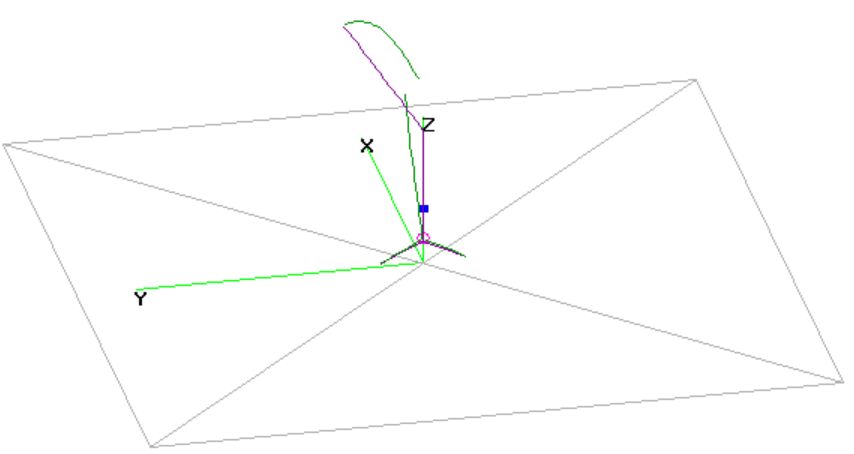Radials and Hybrid Baluns
OZ-Tenna Hybrid UnUns isolate the coax from the UnUn and hence to work properly radials must be used.
In the pic above, the 2 radials at the base of the antenna do carry a small amount of current – you have to squint a little – but it is there.
Why Radials Are GOOD for your signal
The End Fed Half Wave antenna is a dipole that is fed very much off center, almost at its end.
Conventional UnUn’s use the coax as the “second part” of the antenna. Yes, the coax forms part of the antenna and this has a few consequences, and these are the reason we developed the Hybrid UnUn’s we use.
If you coax is radiating, and it is laying on the ground, where is the signal going? There is no magic in this, the answer is that it is warming the ground. Simple. While there is not a huge amount of signal, it is a loss. Why lose it?
If the coax is part of the antenna system, how do different lengths change things? This is really hard to answer because of myriad variables. It all depends on the length, type of coax, the soil conditions. Everything will be a factor and change your antenna.
If the coax is radiating what is it doing to the pattern? Again there is no magic, the pattern will be disrupted. Again there is not a huge amount of signal and hence maybe not a huge change to pattern, but it is a factor.
To reduce common mode current, you must use a line isolator. Yep. This is pretty much the dirty little secret for EFHW antenna systems. As soon as you run a bit of power you’ll find common mode current goes up and your transceiver will not like it. Sure, you may have an ideal coax length or some other factors get involved, but it is highly likely you’ll need a 1:1 in the coax somewhere.
By Using Radials and a Hybrid UnUn you isolate the coax from the antenna system.
Radials will if of ideal length carry some or all your current and hence less will flow on the outside of your coax as common mode current. With OZ-Tenna Hybrid UnUn’s the radials will carry the lions share of the current.
Your radials should be in the air and will radiate better, contributing to your signal.
The length of your coax hardly matters if at all. Radials will be forming the 2nd part of your antenna and so the coax hardly matters if at all.
The pattern will be however you arrange your radials and be repeatable time and again.
Why 2 Radials - One is bad enough!
Fair comment. In fact my highly naive modelling shows that only 1 radial is required for the EFHW to work well.
In real life I found the same thing – sure – just 1 radial worked.
When I tried adding a 2nd radial the SWR went down which was a surprise – so that is the reason. Better SWR. I’m not an “SWR Chaser” as quite often loss improves SWR, but in this case I think it is reasonable to assume your signal will be better with the 2nd radial.
Of course I then added more radials and found zero benefit.
The magic number for a slightly better SWR seemed to be “2” – and that is the reason!
